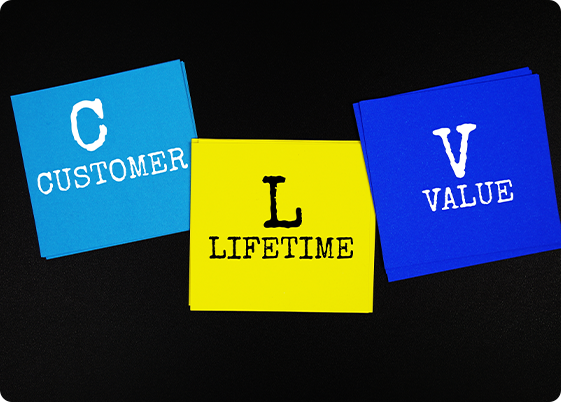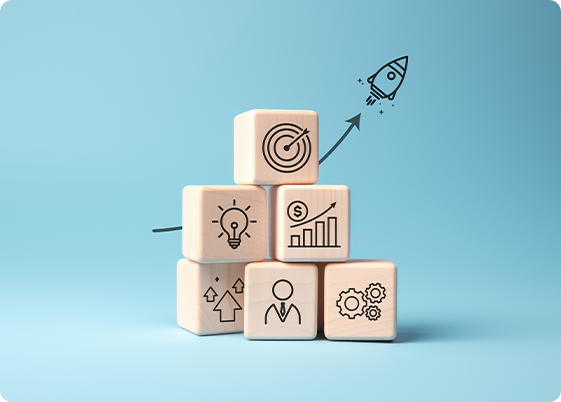
Businesses that prioritise and consistently work to improve customer satisfaction reap significant rewards that extend beyond just positive feedback. The benefits of customer satisfaction are extensive, contributing to sustainable growth, increased profits, and brand reputation.
In this article, we’ll explore the long-term benefits of customer satisfaction to business, focusing on crucial outcomes like customer loyalty, retention, and sustainable growth.
Long-term Benefits of Customer Satisfaction
Let’s first understand: What is customer satisfaction? This term refers to the measure of how well a company’s products or services meet or exceed the expectations of its customers.

Greater Customer Loyalty
One of the most significant advantages of customer satisfaction is greater customer loyalty. Satisfied customers will likely remain committed to a brand or company over time. Loyalty translates to repeated business, which, in turn, provides a steady revenue stream. Loyal customers contribute to higher sales and often purchase additional products and services, further boosting business performance. Implementing simple ways to increase customer satisfaction, such as personalised communication and timely responses, can enhance loyalty even further.

Positive Word-of-Mouth and Referrals
Satisfied customers are often the most powerful marketing asset a business can have. They become advocates for the brand, spreading positive word-of-mouth recommendations to friends, family, and colleagues. This organic form of marketing can significantly amplify a company’s reach without the costs associated with traditional advertising. This further illustrates the importance of customer satisfaction.

Increased Customer Lifetime Value
Customer lifetime value (CLV) is a metric that represents the total revenue a business can expect from a single customer over their entire relationship. The benefits of increasing customer satisfaction are closely tied to higher CLV, as satisfied customers spend more money over time and are less likely to switch to competitors.
A higher CLV means businesses can enjoy long-term profitability without relying heavily on constant new customer acquisition. This enables companies to allocate marketing budgets more effectively and invest in customer experience initiatives that increase satisfaction. With higher CLV, businesses can fund expansion and innovation efforts, positioning themselves for sustainable growth.

Higher Profit Margins
Another notable benefit of customer satisfaction to business is the potential for higher profit margins. Studies have consistently shown that retaining existing customers is much more cost-effective than acquiring new ones. Satisfied customers are less sensitive to price changes because they perceive value in the relationship and the quality of service provided.
Retention
Retention is arguably one of the most direct benefits of high customer satisfaction. Keeping existing customers satisfied means they are less likely to defect to competitors. High retention rates contribute to the long-term stability of a business, reducing churn and the associated costs of replacing lost customers.
Enhanced Brand Reputation
Reputation is a critical aspect of business success, and one of the advantages of customer satisfaction is that it directly enhances brand reputation. When satisfied, customers are more likely to share their positive experiences with others, contributing to a positive brand perception. In today’s competitive market, where information is readily accessible and shared, maintaining a good reputation is crucial for attracting and retaining customers.
The benefits of having satisfied customers extend to establishing a brand that is seen as trustworthy and reliable. This trust can open doors to partnerships, business opportunities, and higher customer acquisition rates. Additionally, a strong brand reputation helps mitigate the impact of negative publicity, as loyal customers who have experienced positive interactions are more likely to defend or remain with the brand even during challenging times.

Increased Innovation and Adaptability
Satisfied customers provide valuable feedback that can be used to improve products and services. This feedback loop helps companies remain adaptable and proactive in making necessary changes. The benefits of increasing customer satisfaction include fostering a culture of continuous improvement and innovation. When businesses listen to their customers and act on their feedback, they can develop products and services that better meet customer needs, enhancing further satisfaction.

Sustainable Growth
Ultimately, all of these factors contribute to sustainable growth. The benefits of customer satisfaction to business are seen in how satisfied customers drive revenue through loyalty, referrals, and repeat purchases. This reliable growth model reduces reliance on aggressive marketing strategies and allows for steady, organic expansion.
Long-term benefits of high customer satisfaction include building a company that is resilient and able to grow at a sustainable pace. This growth is fuelled by the trust and loyalty of customers, providing the business with the resources and reputation necessary to expand into new markets or introduce new offerings without significant risk.
Conclusion
Achieving and maintaining high customer satisfaction is more than just a short-term goal; it is a long-term strategy that significantly benefits businesses. The benefits of satisfied customers encompass increased loyalty, higher profit margins, enhanced brand reputation, and sustainable growth. For business owners, marketers, and customer service professionals, investing in customer satisfaction is about pleasing the customer and setting the foundation for a robust, thriving business.
If you’re passionate about delivering exceptional customer experiences, explore customer service jobs in Jamaica with HGS today.
Frequently Asked Questions
What are the 5 basic levels of customer satisfaction?
The five basic levels of customer satisfaction include very dissatisfied, dissatisfied, neutral, satisfied, and very satisfied. These levels help businesses gauge their performance and identify areas for improvement.
What is considered good customer satisfaction?
Good customer satisfaction is generally considered when most customers express satisfaction with the products or services, indicating that their expectations are being met or exceeded.
What are the 4 types of customer satisfaction?
The four types of customer satisfaction include transactional satisfaction, service-related satisfaction, product-related satisfaction, and relationship satisfaction. Each type focuses on different aspects of the customer experience.
How to measure customer satisfaction?
Customer satisfaction can be measured through surveys, feedback forms, Net Promoter Scores (NPS), and customer reviews. These tools help businesses gather valuable insights into customer experiences and pinpoint areas that need attention.
 Jamaica
Jamaica Canada
Canada Colombia
Colombia India
India Philippines
Philippines UK
UK US
US SA
SA



